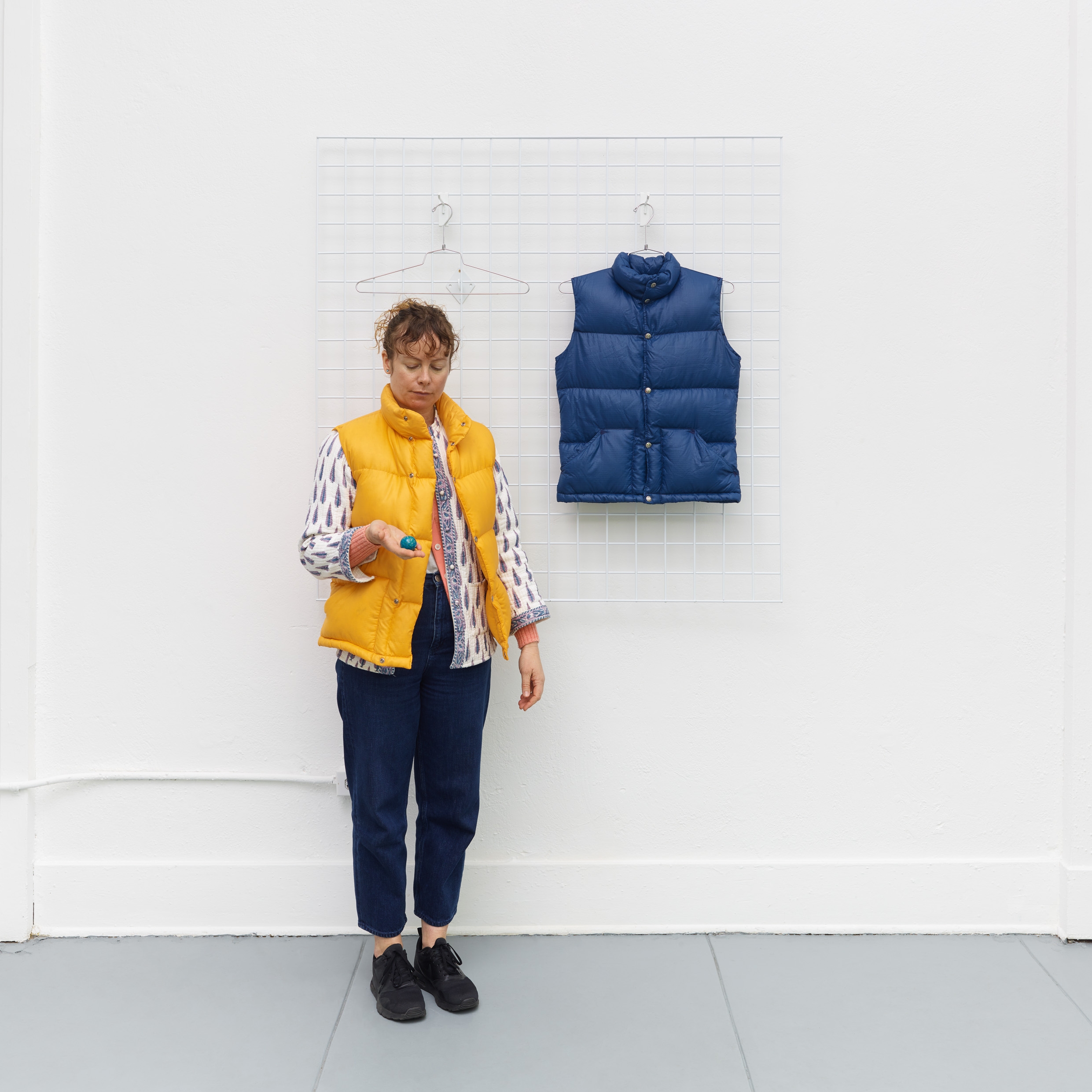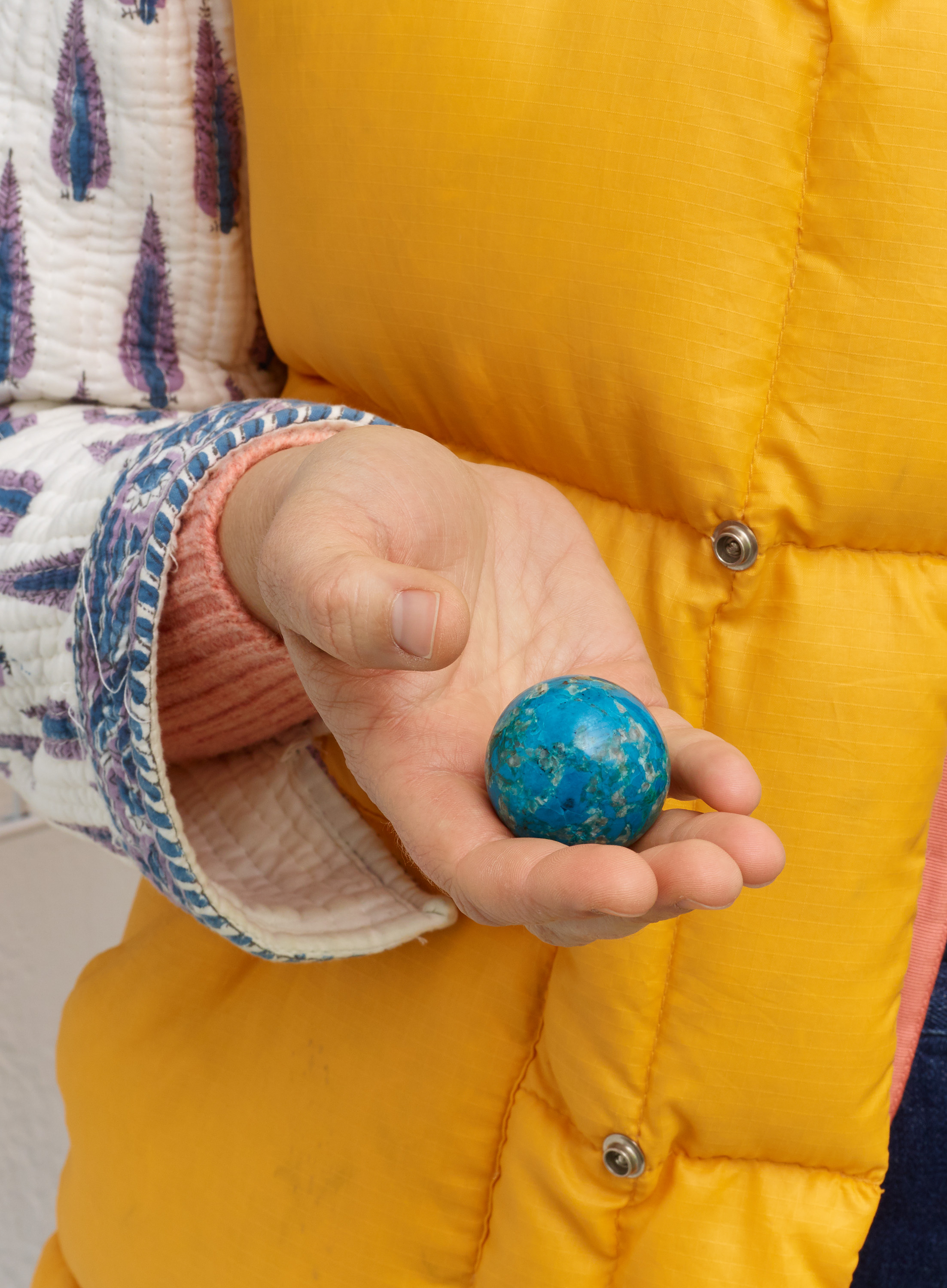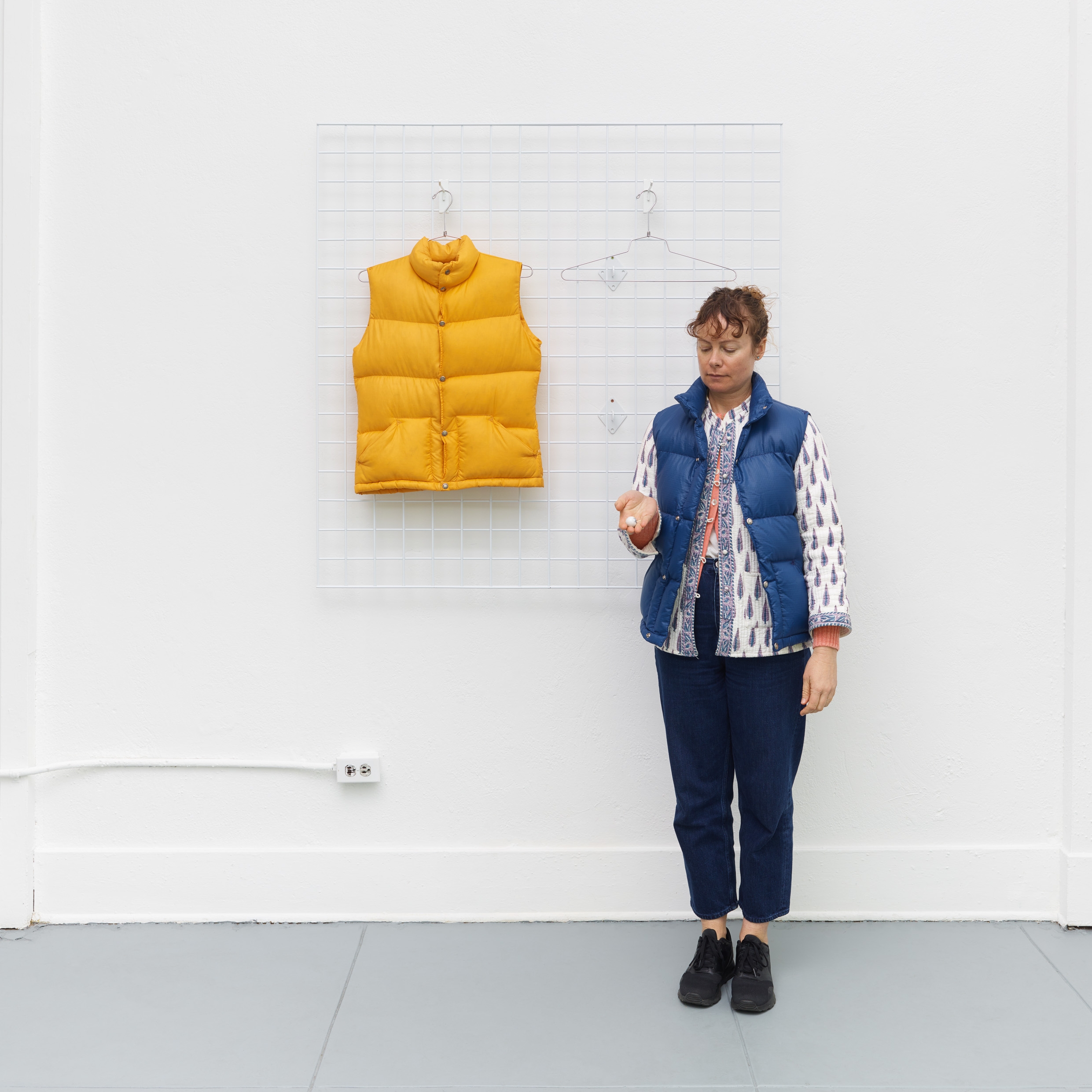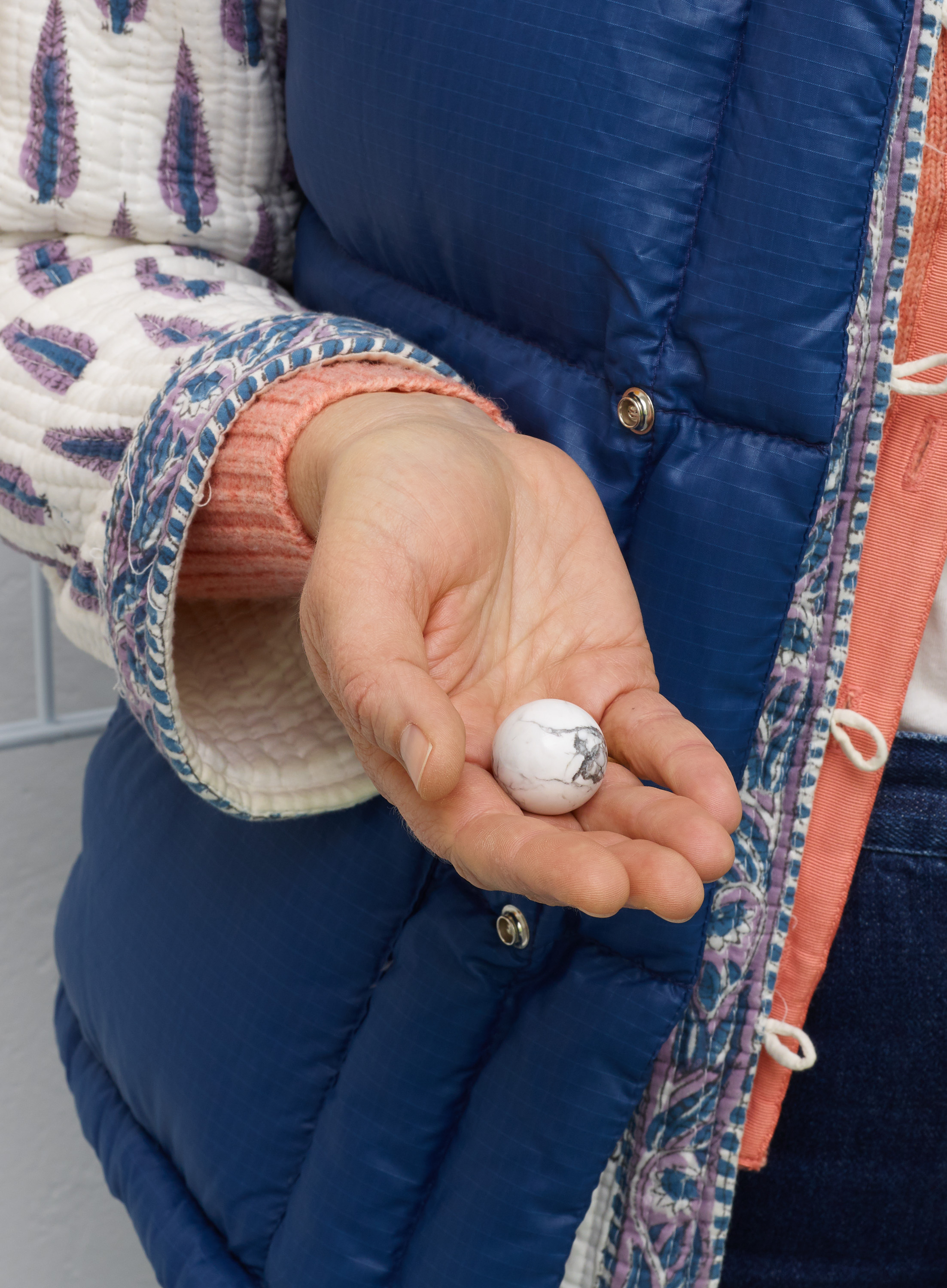Installation view of Pangaea at Household. Household, Los Angeles, CA. March 11-April 22, 2018.
Pangaea: A Store, a Sculpture… or Both
I am an artist. Everything I do, I do from that foundation and point of view. Pangaea Outdoor Supply was always intended to be a functioning store with an identity of its own that could stand alone beyond and outside of the context of an artist’s studio or art exhibition space, without relying on the structures and assumptions that come along with a thing or entity described as “art.” It was always intended to be taken seriously as a retail operation with an eye on becoming a successful business. I did all of the things I needed to do to make it “real.” And because I am an artist, I cared a lot about how it looked, both online and in real life, and if or how it could make meaning. I thought about making a store that was a sculpture and a sculpture that was a store. And I thought a lot about approaching business as a creative medium.
When I was invited to do an exhibition of my artworks at Household, an artist-run gallery in Los Angeles, I had the opportunity to set up Pangaea in dialogue with sculptures and works on paper that are perhaps more readily recognized and read as art. The store (in the context of an art gallery, with an artist as proprietor and artist / gallery attendant as sales clerk) had to be reckoned with as something potentially plural, something that was more than one thing, not so easily classified as one or the other, but maybe a both / and.
Alongside works by Krysten Cunningham, Household’s proprietor, the exhibition also included sculptures and works on paper that are influenced and inspired by my time in the outdoors and my work with and at Pangaea. Soft sculptures made of scraps of technical materials that were sourced for research and development for potential products allude to functionality but wind up being "merely” aesthetic. Stuffed with Primaloft, backed with ultralight sleeping bag fabric, and kitted with grosgrain gear loops in place of hanging hardware, these small soft sculptures recall and reference traditional quilt making as well as minimalist and conceptual art and color field painting.
Another sculpture echoes the retail design of the Pangaea shop. With a square of retail display grid wall as a support and background, two vintage down vests hang side by side. A blue vest has a white and grey stone orb in the right pocket, and a yellow vest has a blue and green stone orb in the right pocket. The vests can remain at rest on display or be worn. The grid is a basic organizing principle that is often implied but was brought to the forefront in minimalist sculpture and postmodern painting. The grid also alludes to linguistic structure, and I intended this work to read like a poem: Holding the moon in your pocket / Holding the earth in your pocket. It is also a picture of two people standing side by side, looking off into the distance.
In two works on paper, I used language for its material and imagistic qualities as much as for its directness. One pairs a simple list of pretty insignificant things I never thought I would do (for instance, carrying trekking poles) with my extensive and detailed backpacking gear list, a spreadsheet that is laminated and hung from the work’s walnut frame. The other is a diptych, both featuring the same phrase: ALONE IN THE WILDERNESS. The words are drawn by hand without stencils or other guides, so the lettering wavers, the distances between letters and the sizes of letters varying more or less, here and there. The rectangular paper is oriented differently in each: a portrait and a landscape. Language drawings give me a chance to say a lot with a little and allow me to present an almost empty page as a work of art. This latitude is so liberating and so meaningful for me, because I want to tell you a very specific thing and then give you the space to think about it. These works on paper are landscapes without images.
The artworks in this exhibition all possess the same both / and condition upon and through which Pangaea operates. They are more than one thing, they are both / and. One of the fundamental tenets of ultralight backpacking guides us to consider multiple uses for each item we carry with us on an outing. This requires creativity and resourcefulness and is one of the many reasons I was drawn to this style of backpacking. In my endeavors as an artist and a backpacker, I see utility and beauty, function and form as inextricably intertwined. If something doesn’t work, it isn’t beautiful. If something isn’t beautiful, it doesn’t work. I still don’t know if Pangaea is a sculpture or a store, but I like to think that it has succeeded by being both.
Till next time...
Installation view of Pangaea at Household. Corrina Peipon and Krysten Cunningham at Household, Los Angeles, CA. March 11-April 22, 2018.
Installation view of Pangaea at Household. Corrina Peipon and Krysten Cunningham at Household, Los Angeles, CA. March 11-April 22, 2018.
Untitled (Notch), 2018. 1000D Cordura, Momentum 50MR, Primaloft Sport, grosgrain, thread. 11 x 8 ½ inches.
Untitled (Rainbow), 2018. Ultrex, Momentum 50MR, Primaloft Sport, grosgrain, thread. 2 x 23 inches.
Holding the Earth in your Pocket / Holding the Moon in your Pocket, 2018. The North Face brown label vests, chrysocolla sphere, howlite sphere, grid wall panel and fixtures, hangers. 48 x 48 x 5 ½ inches.
Alone in the Wilderness (Portrait / Landscape), 2018. Two framed drawings, Pigma ink on paper. 27 x 49 ½ inches.
Last Modified October 29, 2012, 2:55PM / Gear List, 2018. Typewriter ink on paper, walnut frame with cup hook, three laminated inkjet prints, binder loop. 29 x 12 ¼ inches.
Last Modified October 29, 2012, 2:55PM / Gear List, 2018 (detail). Typewriter ink on paper, walnut frame with cup hook, three laminated inkjet prints, binder loop. 29 x 12 ¼ inches.












